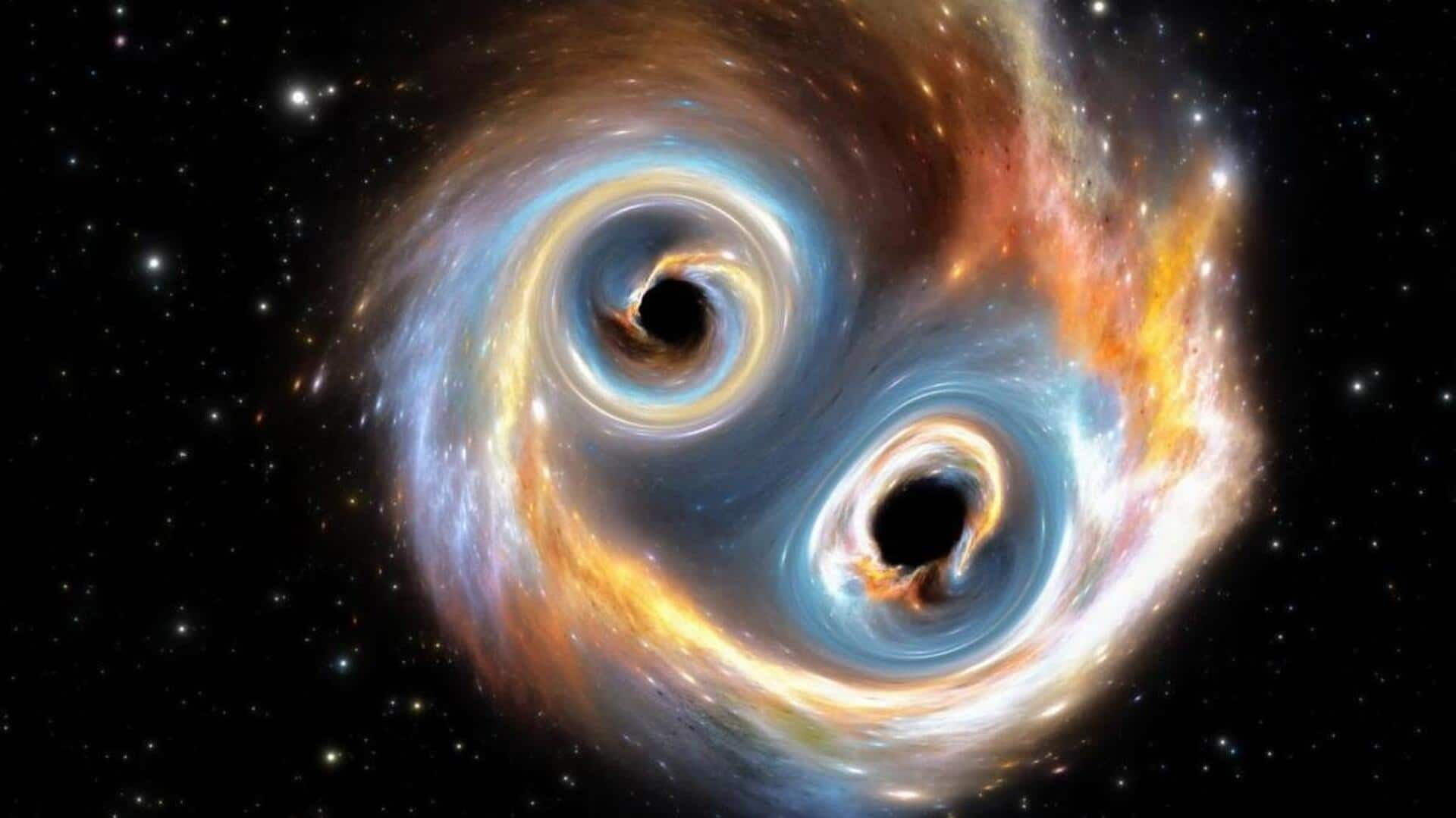
Scientists reveal what happens when black holes cross each other
What's the story
To better understand the complex interactions between black holes, a team of physicists has come up with an innovative mathematical model. The research, led by Mathias Driesse at Humboldt University in Berlin, moves the focus from black hole mergers to "scattering events." These are cases where two black holes come close under their mutual gravitational pull and then go on separate paths without merging. The findings were recently published in Nature.
Gravitational waves
Understanding gravitational waves from black hole interactions
Gravitational waves are ripples in the fabric of space-time created by the movement of massive objects such as black holes or neutron stars. They were first predicted in Albert Einstein's theory of general relativity in 1915, and were directly detected for the first time a century later, in 2015. Since then, these waves have become a powerful observational tool for astronomers probing some of the universe's most violent and enigmatic events.
Quantum field theory
New approach to modeling black hole interactions
Driesse and his team's research centered on scattering events, which produce strong gravitational wave signals as the black holes speed past one another. To accurately model these events, they relied on quantum field theory, a branch of physics usually employed to describe interactions between elementary particles. Their work included five levels of complexity, achieving what physicists term the fifth post-Minkowskian order, the highest level of precision ever achieved in modeling these interactions.
Unexpected appearance
Discovery of Calabi-Yau manifolds in gravitational wave equations
During their calculations, the researchers found that intricate six-dimensional shapes called Calabi-Yau manifolds emerged in the equations describing energy radiated as gravitational waves. These abstract geometrical structures have long been a staple of string theory, a framework attempting to unify quantum mechanics with gravity. Until now, they were believed to be purely mathematical constructs with no directly testable role tied to observable phenomena.
Enhanced predictions
Impact on future theoretical models and gravitational wave detection
The emergence of these structures in calculations marks the first time they've appeared in a context that could be tested through real-world experiments. The findings are expected to significantly enhance future theoretical models aiming to predict gravitational wave signatures. This improvement is crucial as next-generation gravitational wave detectors come online in the years ahead, including the planned Laser Interferometer Space Antenna (LISA) and the Einstein Telescope in Europe.